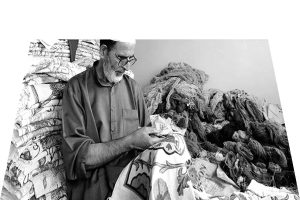Spoken much lately for its ‘need for economic growth’ revamp, Jammu and Kashmir is apparently facing dispiritedness on its export economy front. Amid the deafening ‘development’ din, 8 valuable constituents are worthy to mention here, for their pervasive presence and power in Kashmir’s way of life.
By Pitembar Kaushik
Willow-Wood
Wood from Kashmir Willow is used to make namesake professional-grade optimal cricket bats.
Kashmir Willow grows fast and thus is drier, more consolidated and harder, and lacking in grain orderedness than its light-coloured English counterpart. It is considerably heavier, stiff and inflexible and has an uneven grain distribution, that is inconspicuous. It is quiet economical, compared to its Anglican contender.
This medium-sized deciduous tree grows in cold, wet places and sheds its leaves at the culmination of Monsoon.
However, Kashmir’s indigenous batmaking is a loose industry where each maker earns a few crores annually.

“The law allows willow to be sold only within Kashmir. However, bat makers from Delhi, Punjab and Karnataka often buy willow on the black market for a little extra. In Kashmir, we get the cleft for anywhere between Rs 400 to Rs 600 depending on quality,” said batmaker Mohammad Asif, to the Economic Times.
Sericulture
Kashmir is the fifth largest producer of silk in India. Bombyx silk cultivated on Mulberry trees and (Antherea) Tussar or Kosa Silk harvested off natural oak trees are amply-found in Kashmir.
Tussar is more textured and less durable of the two. Bombyx silk, the most common and frequently encountered variety has a relatively longer fibre structure.
In the region, mulberry trees in the wild form existed from antiquity, and have been harvested for silkworm cocoons for quite some time.
Approximately 6,680 quintals of raw silk of Rs.50 crores worth is produced annually in the newly-designated union territory.
J&K lies at the same altitude at which leading biovoltine (brooding 2 generations an year) sericulture countries of the world occur, leading to conducive environment that in turn, leads to international-standard and norm-compliant high-grade silk.
J&K has 7 lac mulberry trees, and has about 3000 primarily silk-dependant villages.
Wool
J&K was the source of a tenth of India’s wool and hair harvest.
Cashmere is a historically internationally-prized fiber obtained from cashmere goats or pashmina goats and a few other breeds. It is said to be finer, stronger, lighter, softer and about three times warmer (heat-retentive) than ordinary sheepwool.
Various nations have stringent criteria enforced, to filter high-quality genuine pashmina, inclusive of fibre dimension, its distribution and mean, and source of derivation. The fiber is also known as ‘pashm’ (wool in Persian) or pashmina for its use in the salient eponymous handmade shawls of the region.
Cashmere wool is collected during the spring moulting, when the animals naturally shed their seasonal winter coat.
Although today, a host of countries ranging from Mongolia and China to Australia produce Cashmere, the top-quality fibre with highest finesse and valuable exceptional ultra-softness is produced exclusively in its native homeland.
Handicraft
Handicrafts are often pedalled in temporary bazaars or ‘melas’ (fairs) hosted by Kashmiris in the months preceding advent of Winters, all over India. Weekly adrift Floating bazars in the Dal Lake also pedal characteristic goods and souvenirs to tourists.
Silverware-crafting, diverse Woodwork, Carpentry, Handloom, salient papier-mache, basket-making, weaving, handmade jewelry-making, are part of the varied, rich traditions, although apprenticeships and hierarchical guilds decline, owing to tumult-borne disruption, modernisation and westernisation.

Most of these salient products are latched with protective GI tags denoting source-genuinity issued by the government. Most of these professions originated via transmission by Persian mystical sages and spiritualist harbingers.
Saffron
‘Zafran’, subsequently anglicised to Saffron, is a precious spice derived from the blossom of the Crocus sativus, commonly named as “saffron crocus”.
The vivid crimson styles and stigmata, called strands, are fastidiously harvested, amassed and sun-dried to be utilised as a condiment and a chromatic agent in culinary preparations and specialty gourmet, frequently the gastronomical muse of the affluentsia.
Long among the world’s most expensive spices by weight, it’s believed that saffron originated in Iran, Kashmir’s frequent precursor and perpetrator in culture, lifestyle and motifs, although this is enshrouded in dispute. Pertaining to this regard, Greece and Mesopotamia have also been proposed as the possible site of origin of this variety of the plant.
Moist environments are conducive to Saffron cultivation. The annual rainfall in Kashmir averages 1,000–1,500 mm, which is suitable for the same.
Kashmir affords an annual yield of about 3 tons. Prices range from US$4000 to US $24,000/kg.
In the words of the Chinese herbalist Wan Zhen, “The habitat of saffron is in Kashmir, where people grow it principally to offer it to the Buddha.”
Tourism
Kashmir’s most distinctive and defining economic sector has indeed been tourism. Abounding with unprecedented and exquisite natural beauty, colourful culture, and a multidimensionally multichromatic semblance.
The holistic, eclectic multilingual society and their varied and distinctive lifestyles offer a break from the routine mundanities and obtuse rhythms of life. Kashmir is both literally and spiritually colourful. The land of myriad orders of pioneering mystics, poets and bards, ingenious artistes and skilful craftsmen and top intelligentsia, Kashmir is a world to comprehensively behold.
The lakes, mountains, birds, lotuses, snows, conifers, majestic Mosques, idyllic Sufi shrines, multiple pilgrimage sites, ancient monumental ruins, and the unique food attract eager, enthused visitors worldwide.
Tourists often takeaway souvenirs, supporting local skillsmanship and informal handmade industry, in turn aiding preservation of this exclusive culture and tradition.
Fructiculture and Horticulture
Kashmiri orchards afforded for 91 to 95 percent of Walnut, Cherry and Almond production of India, having favourable, precipitation-surplus temperate climate in Central and Southern Kashmir. J&K also accounts for a quarter of Apple and Pear produce of India.
Jammu and Kashmir’s economy is predominantly dependent on agriculture and allied activities.
Fruit trees are commonplace in the valley; the cultivation orchards principally afford pears, apples, peaches, and cherries.
Besides the prized Saffron crocus, several hundreds of varieties of ornamental plants are cultivated in and exported from Kashmir; many of them endemic and exotic. The delicate aesthetic of these decorative masterpieces of nature has been historically prized and much-coveted.
Kashmir’s floral biodiversity is enormous and diverse in itself, spanning a vast range of habitats and multitude of sub-biomes.
Sapphire
The Sapphire mines of Paddar were discovered out of sheer serendipity, being stumbled upon by a caravan. Kashmiri Sapphire is much-reputed, venerated, and demanded in the jewelry market.
Tucked up in the inhospitable Himalayan highlands of Padder, in the Doda district, the world’s topmost-grade sapphire is present galore. However, extreme, drastic terrain and lack of resource harnessing knowhow and technical apparata have impeded the commercial exploitation of this immensly valuable natural reserve.
Kashmiri Sapphire is prized for its impressive colour’s persistence in all forms and hues of light. Rest varieties of the gemstone, in comparison, lose their distinctive blue vividness and glint in the dusktime illumination.
This salient qualitative trait of Kashmiri Sapphire is attributable to the presence of microscopic contaminants in the gem, imparting it a magical ‘velvety’ effect, forging a soft and yet persistent, nigh-indelible colour. It is also the major reason behind its pricing at roughly two hundred thousand dollars per carat, the most expensive of its kind.
The beauty of Kashmir sapphire is simply unmatched.

















